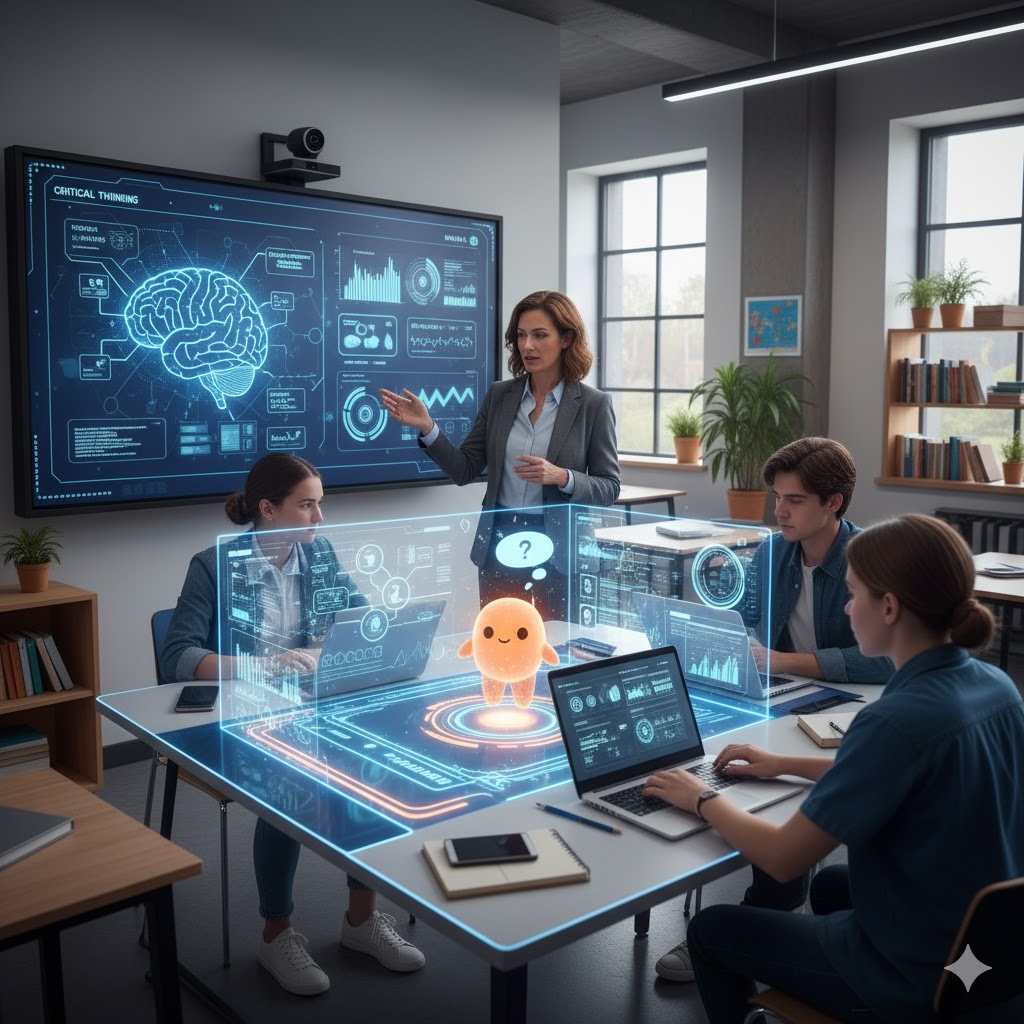
Artificial Intelligence is no longer a futuristic concept. It is now integrated in classrooms, universities, corporate training, and online courses. But the true potential of AI in education is not just about generating materials or automating content creation. The real value appears when AI supports the way learners think — helping them reflect, compare ideas, and develop deeper mental models.
AI works best when it becomes a thinking partner, not a shortcut.
Today, AI tools can support learners by:
- guiding thinking through problem-based questioning
- providing instant, personalized feedback on tasks and drafts
- adapting explanations based on the learner’s level
- allowing self-paced learning anytime and anywhere


“The future classroom is not teacher vs AI — it is teacher + AI + learner working together to build stronger minds.”
The teacher’s role becomes even more meaningful when AI takes care of repetitive grading, basic corrections, and routine explanations. Educators can then invest more time in creativity, metacognition, collaboration, and real critical thinking. AI should not replace human teaching — it should strengthen it.
AI in education is not about giving students quick answers. It is about developing independent thinkers who can analyze, question, and build knowledge with confidence. When human expertise is combined with intelligent learning systems, we create more personalized, efficient, and inclusive learning environments for every learner.
Rabih E. Kahaleh
Author
